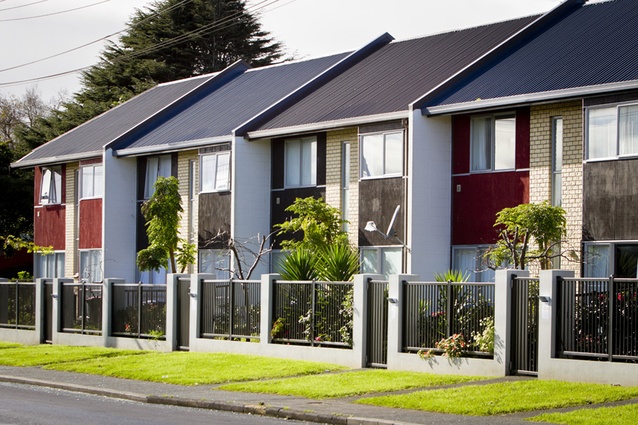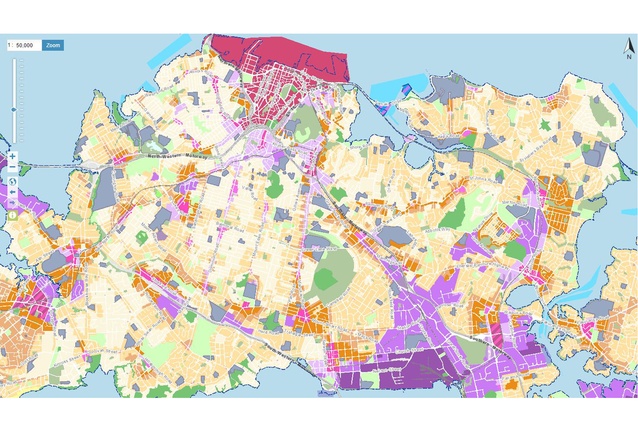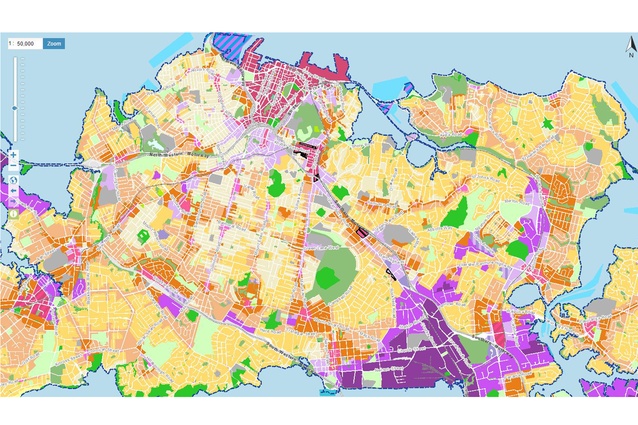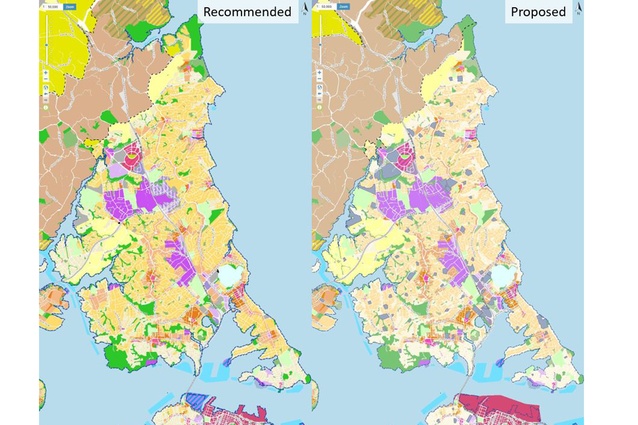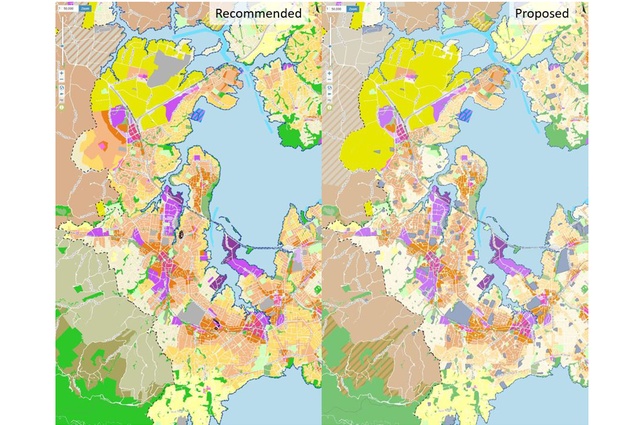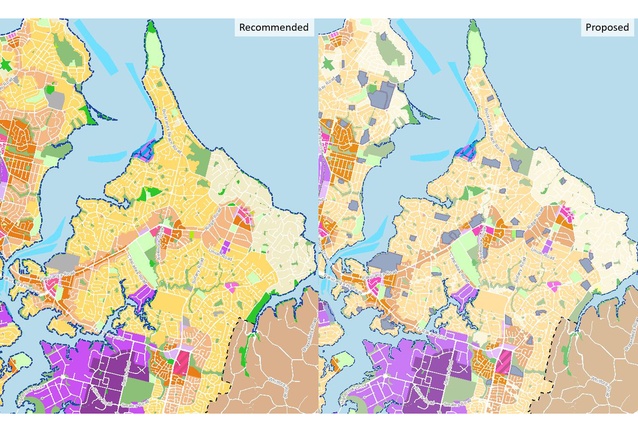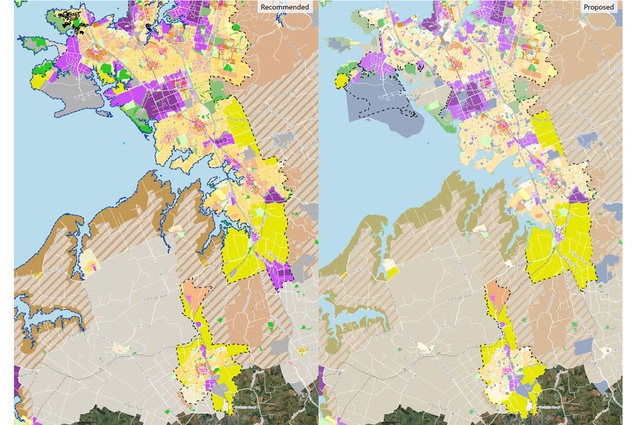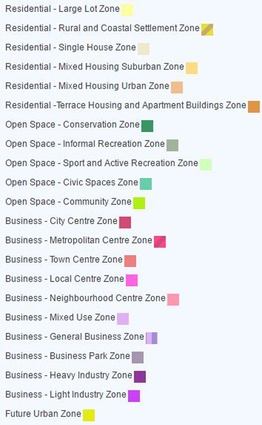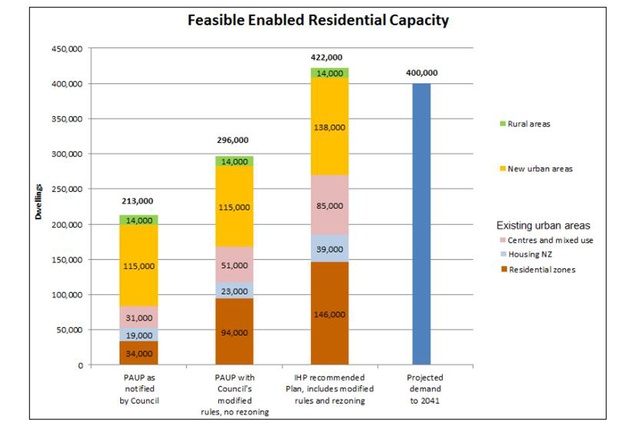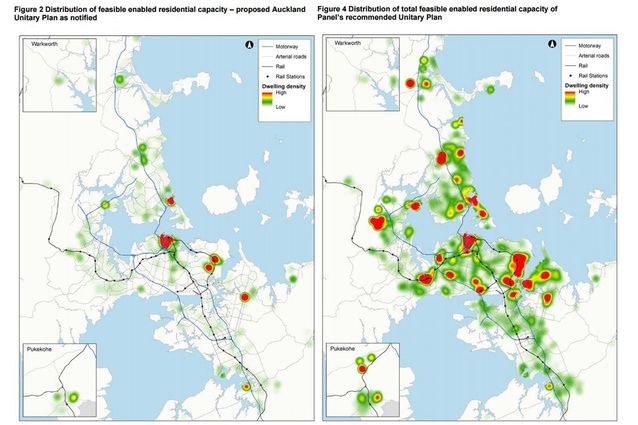The future of Auckland
After over two years of dedicated work, the Auckland Unitary Plan Independent Hearings Panel (the Panel) completed hearings on 13 May, and its recommendations on the Proposed Auckland Unitary Plan (PAUP) were made available to the public on 27 July 2016.
It is now over to Auckland Council to consider the Panel's recommendations and decide whether to accept them in part or in full, or reject them. The council must publicly notify its decision by 19 August.
Here, ArchitectureNow features various views from individuals and groups involved in Auckland's built environment and planning on the Panel's recommendations to Auckland Council.
GRAEME SCOTT
Chairman of the Urban Design Forum and director at ASC Architects
The Auckland Unitary Plan Independent Hearings Panel’s recommendations to Auckland Council are clear, and as simple as they could be following the two-plus years of submissions/mediations/expert conferences and hearings involving almost everyone in Auckland’s design and planning community.
Gone are the peripheral concerns around matters that are, or should be, dealt with by other regulations, such as dwelling and room sizes, ceiling heights, window sizes and insulation standards which, in the Panel’s view, are Building Code matters. Arguments around socially aspirational outcomes (affordable housing, universal access) have been swept aside. The much debated rural-urban-boundary, following agreement by our national politicians that it’s a bad idea, has been predictably neutralised as an issue, although it’s still there in name. Gone are the so-called urban design rules on such matters as garage door setbacks, windows to the street and front fence heights. Requirements for parking on private land are, thankfully, mostly gone.
So, a simple plan; a plan that is, as they say, focused on outcomes and integrated both vertically and horizontally. By way of example, in the residential rules (the main area of my involvement), the outlook requirements from habitable rooms are now common to all the main zones, and I never did understand why, in the originally proposed plan, the mixed housing zones had yards and height-in-relation-to boundary-controls, while the terrace house and apartment zone had stepped setback dimensions to achieve much the same end. All these zones now have a common set of rules, covering such matters as coverage, building separation, outdoor living and fences.
The Panel has taken the Auckland Plan very seriously, and has modelled their recommended plan on the principles set out in the 2010 document. But more than that, it has actually delivered on the compact city vision, with almost 60 per cent of the planned 422,000 dwellings over the next 30 years to be located inside the 2010 Metropolitan Urban Limit. Some of the increase in the planned numbers above the originally proposed 212,000 came from mediated changes to the zone rules during the hearings process (it went up to around 296,000 as a result), but the huge increase to the present number appears to be largely a result of applying the zones differently on the maps. Density around centres and transport corridors has been emphasised.
So this is the good news, but the other part of the Auckland Plan’s vision for the quality compact urban form is the “quality” part, and this is where the recommended plan encounters some difficulty. While “recognising that the need to achieve a quality design is increasingly important as the scale of development increases”, the Panel’s report goes on to say “good design is based on principles rather than rules. Mere reference to good design or the listing of preferred design principles is ill-suited to a regulatory framework which imposes binary ‘grant/decline’ outcomes. Discretionary decision-making must be exercised on the basis of relevant and clear objectives, policies and assessment criteria rather than on subjective preferences”.
Auckland Council’s brave attempt to start to address this issue through the mandatory provision of Design Statements has been ruled out as being costly and ineffective, but there’s little on offer as a replacement, and no mention of peer design review which has proved so successful at Hobsonville Point, for instance.
Perhaps it’s unrealistic to expect an RMA plan to deliver a blueprint for design quality, but reading on it feels a little as though they’ve given up:
“A lack of specific standards, factors or criteria can result in the assumption that the objectives and policies are intended to achieve a uniformly high or excellent standard in in all locations or from all activities. While there are certainly many aspects of Auckland that are of high quality, the Unitary Plan must also address many things that, realistically, are unlikely to be described that way.”
“The real issue is whether the Unitary Plan provides the necessary context by setting out clear reference points to enable ‘quality’ to be assessed in an appropriate context. In the Panel’s view, the objectives and policies should establish such context to enable people to determine whether their activity or use of resources achieves the appropriate standard of quality.”
So while the assessment criteria for a resource consent do include “intensity, scale, location, form and appearance”, the actual assessment will rely on reference up to the higher-level objectives and policies.
Maybe this is as good as it gets, but all sounds a little vague and open to different interpretations. Is there a better way?
PHIL EATON
President of the Auckland branch of the Property Council New Zealand
The Property Council congratulates the Independent Hearings Panel on delivering a set of forward-thinking Unitary Plan recommendations that sets a clear and considered path for Auckland to follow as it transforms into the world’s most liveable city.
However, these well-considered recommendations have a long way to go, as we now wait with baited breath to see whether councillors will make the hard political decisions and accept the recommendations as proposed.
Proposed zoning and rule changes will enable substantial transformation of existing communities. Some will view the changes negatively, many will be positive about the opportunities it creates for them. This is about building a city that is inclusive.
To be inclusive we need to deliver many diverse housing typologies in places where people want to live. It’s important to remember that cities are organic and in a constant state of flux, we need councillors to think not about now, but how Auckland will develop and evolve in the future. The very consultative and robust approach the panel have taken provides this direction.
On the face of it, if these recommendations are accepted, they will go a long way to achieving the housing density Auckland desperately needs. It is extremely positive to see greater zoning for townhouses, apartments and mixed-housing.
For nearly four years the Property Council has consistently advocated that the previous versions of the Unitary Plan did not provide the feasible development capacity for housing that Auckland desperately need. We see the identified housing capacity of 422,000 as a substantial advocacy win. The Panel has clearly listened to us and our members.
The Panel also clearly understands the need to provide housing density around town centres and the public transport network. Providing access to housing, jobs and amenities is crucial to the future economic and social prosperity of Auckland.
Auckland also needs to grow out as well as up. We are living with the failure of the old Auckland Regional Council to move the urban growth boundary out. Through this inaction, they choked land supply, which has contributed to the skyrocketing cost of land.
Property Council is pleased to see that the urban growth boundary will be flexible and fluid in that it will be able to be relocated by way of a plan change. It’s a positive to see new developments can occur outside the existing boundaries. Auckland needs this flexible approach to meet the challenges of the existing housing supply shortage.
Today is a huge win for those who believe in an Auckland that caters for its current and future residents. Not only Aucklanders, but all of New Zealand, needs an Auckland that will grow in a dynamic and positive way. The Panel’s recommendations are a huge step forward in making this a reality.
PATRICK REYNOLDS
Editor at transportblog.co.nz, architectural photographer and member of Urban Auckland + Greater Auckland incorporated societies
The IHP recommended Unitary Plan is a much-needed improvement on the Council’s proposed version. This is because it responds more accurately to the realities of housing demand, actual existing urban conditions, and likely possibilities: Auckland’s urban form is naturally constrained geographically, it has also been unnaturally constrained by over-regulation; and the result is a shockingly inequitable access to housing, and an insipid and unvarying urban form.
This new plan provides for increased growth within the existing city limits and a great deal of further expansion. Much more of the latter than I think is prudent; but at least now we can have a period where the market, and to a large degree that means the people, can decide between ‘up and out’. In this it does make for a less proscriptive set of rules than previously.
However, that does not mean it is a true wild west for urban development; there are still many rules, some of which I am disappointed have been retained, such as the anti-competitive retail zone parking minimums. And, in general, we are still getting a very low-rise city and peculiarly so for the size of its population.
I am also disappointed with the wholesale retention of the inhibiting and anachronistic Volcanic View Shafts. I do not believe these all improve the visual quality of the city, but rather, because there are too many and their impact is so widespread, they enforce a bland, squat, and unvarying urban form. Instead of enhancing the experience of the marvellous volcanic cones, they prevent the cityscape from framing their presence in our city for maximum effect.
There is an additional important issue that is now made even more pressing by this more realistic plan, which is the need to deliver a real and complete Rapid Transit Network to serve both these newly intensified growth areas and the large swathes of ex-urban living as soon as possible, otherwise our narrow isthmus will be permanently clogged with inefficient and damaging volumes of traffic congestion. This must now be the focus of both government and city agencies.
The most pressing issue now is that the Council must approve the plan and move on. No doubt we will want to change the plan again; but now it is time to accept this version, live with it for some time and experience its outcomes.
7.5/10.
DAVID GIBBS
Director of Construkt Architects. Managed, on a voluntary basis, the participation of the New Zealand Institute of Architects, Urban Design Forum and Generation Zero in the Unitary Plan process
One of my concerns with the Unitary Plan is whether it would deliver the 240,000–280,000 new dwellings within the 2010 Metropolitan Urban Limit (MUL). That question looked perilously bad, with estimates as low as 80,000 at one stage, which then inched upwards as Council relaxed their development controls to a still worrying low level of 160,000.
One of the most interesting reports on the Council’s Unitary Plan website is the “Report to Auckland Council Overview of recommendations Annexure 1 enabling growth”. If one looks past that numbing title and the 47MB download, the report is well worth thumbing over.
It reports on the work of the 013 Experts Group, the stars of which are Kyle Balderston of Auckland Council’s Research and Monitoring Unit (RIMU) and Patrick Fontein of Studio D4. They designed a immensely powerful tool that they dubbed ACDC15 to calculate the likely number of feasible residential dwellings that can be expected to arise over time from the Unitary Plan as recommended (RUP).
To my relief, the ACDC model is predicting that we will in fact come in midrange of the target at 270,000. The report includes some interesting tables showing what typologies are expected to produce this increased capacity and some “heat maps” showing where they will occur. Maybe we will get a compact city… if our City Councillors toe the line.
BARRY COPELAND
Director at Copeland Associates Architects
I, like most of the architectural community, have been waiting impatiently for the conclusion of this process and the recommendations of the Independent Hearings Panel on the Unitary Plan.
The start of public consultation was back in 2012 when Auckland Council first called for comments on the Draft Plan. I’m pretty sure that the rigorous and protracted process since, that has dissected it and and then put it together again, will have resulted in a document that is the best that it can be.
There is no other choice in my view but for the Council to accept the Panel’s recommendations immediately, and then let us all get on – with renewed energy – to developing a more dynamic and liveable city.
The Unitary Plan is not enough in itself to solve the housing crisis, but it is the essential first step to creating an environment of less bureaucracy and clearer direction. It provides a balanced framework for building up as well as building out. Both are needed.
The greater challenge now is for designers, and the building industry, to deliver quality buildings and environments at a greater rate than ever before in New Zealand.
ALEX CUTLER
Chief executive of the New Zealand Green Building Council
Over the past couple of years in Auckland, there has been a lot of debate and opposition to the concept of density, and the NZGBC is pleased that the Panel has stayed true to what Auckland city badly needs. The reality is that Auckland has a significant housing supply and affordability crisis on its hands, and there’s no way the city can continue without embracing some level of density – as well as broadening the range of housing choices in terms of size and typology.
The good news is that there are plenty of examples of density done well – from all over the world, to here in Auckland with Wynyard Quarter – that we can roll out on a larger scale. Compact cities create vibrant, liveable communities.
Auckland Council has also expanded the rural-urban boundary to include 30–40 per cent more land. This isn’t surprising, given political pressure around the issue, but the reality is that it costs more to develop infrastructure as a city expands. Cities around the world are coming up with solutions that avoid or minimise sprawl, and its environmental cost.
OECD research has found that cities with a compact urban form and high population density are likely to have lower CO2 emissions per capita, through lower transport emissions and lower electricity consumption. Also, a 2014 study from the University of California found that while densely populated cities produce lower levels of greenhouse gas emissions per person, the sprawl around these cities — and the commuting and bigger homes — can significantly affect that benefit.
As part of the recommendations, the IHP also stated that achieving a 6 Homestar rating on all homes in Special Housing Areas should not be required in Auckland’s Unitary Plan.
This decision is disappointing, considering Homestar has already had such a positive impact on Auckland’s residential housing market. Homestar is a rigorous, science-based and market-tested rating tool. Since it’s been in the PAUP, it’s pushed developers to think about the long-term impacts of their practices, to find ways of building more efficiently and minimising the ongoing footprint of their homes – which is also a great selling point for buyers.
There’s an opportunity here for the market to keep the momentum going, and for consumers to demand more efficient, sustainable homes from suppliers. We want to set a building standard that all New Zealanders deserve.
JAMES GARDNER-HOPKINS
New Zealand Institute Of Building national councillor and resource management barrister
The Panel has had an enormously difficult task to resolve complex and competing issues and submissions, but has delivered a vision to guide the development of Auckland into the future. The process required participants to look at new, streamlined ways of presenting evidence, approaching mediations and expert conferencing sessions.
While some participants struggled with the volume of material and pace of the process, the anecdotal reports from many sectors, including the construction and development sectors, reported some advantages over the usual planning process (such as streamlining of evidence and the greater incentives for industry to work together to find a common position).
Substantively, the Plan promises much for the construction industry. For example, it anticipates 131,000 new dwellings in Auckland over the next 7 years, erring on the side of “over enabling”, on the basis that “the costs to individuals and the community of under enabling capacity are much more severe than those arising from over enabling.”
The Auckland construction industry is currently in good shape and this enabling promises continued growth into the short and medium term.
MARK TODD
Director of Ockham Residential
Ockham Residential is pleased to see the recommendations of the Independent Panel emerge – the Panel has done Auckland a great service in completing this monumental task.
The central issue for Auckland is the dysfunctional nature of our new housing supply – it does not cater for the social, demographic and financial needs of Aucklanders. The average house price in Auckland is now 10 times household income, making Auckland one of the 5 most expensive cities in the world. The average size of a new suburban dwelling is 210sqm. Worse, however, is the startling statistic that our new housing pipeline delivers houses at a multiple of 11.5 times household income. In other words our new housing supply is raising the median house price, not lowering it!!
Why? Because our historic approach of enshrining ‘Density’ rules as the paramount protection of our suburban environment has economically precluded the development community from delivering a wide variety of housing sizes, configurations and price points in places we want to live. Restricting buildings to one house per 375sqm, by economic necessity, precludes that house from being a one or two bedroom unit, or a compact three bedroom unit. The land value demands a large house be built, hence our new housing supply is delivering a suburban median price of $950,000 or more.
Further, the density rules have encouraged detrimental infill housing across the existing suburban environment – long concrete right of ways serving individualised garages, with the associated loss of green space and street appeal. Our current suburban neighbourhoods are not by any measure a nirvana of best practice urban design.
The IHP recommendations mark a step change in our planning regime. The panel has recognised that the protection of landscaped space, as we redevelop our suburbs over the next thirty years, is a far more appropriate control to protect the suburban environment. Coverage provisions have been reduced markedly from earlier versions of the PAUP.
The panel has also recognised the weight of evidence showing that the removal of the density controls will encourage a larger number and greater variety of houses to be built in the places people want to live at a price they can afford.
The Panel’s considered and consistent rezoning prioritising proximity to work, transport, retail, educational and social amenity has resulted in a spatial zoning pattern that will breathe life into our city’s vision for a quality, compact city as set out in the overarching Auckland Plan.
Concerns about some of the changes, such as the removal of development controls leading to a proliferation of ‘shoebox’ apartments are misplaced. The Unitary Plan as proposed retains the most effective check on high density developments – namely, the Urban Design Panel. With this Panel, combined with the excellent Auckland Urban Design Manual, Auckland already has an excellent process for ensuring good quality urban design outcomes.
Removing the numerous prescriptive development controls that overlay this process just means we have one process, not two. Quite apart from that, developers know that consumers and financing banks have limited appetite for unappealing floor plate sizes, and won’t develop what the market doesn’t demand. The new approach is a design-led approach, rather than a rules-based approach, and is one we fully support.
After four years of hearings and submissions, the Unitary Plan represents an exciting pathway forward to making Auckland the world’s most liveable city. The challenge now sits before the Auckland Council and it is our fervent hope that they will, collectively, rise to meet the challenge. Auckland’s future depends on it.
Read the original Proposed Auckland Unitary Plan here, and the Independent Hearings Panel recommendations here.

